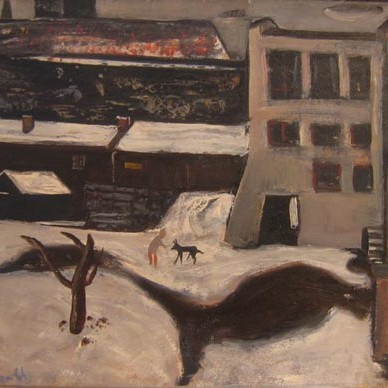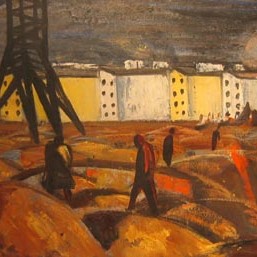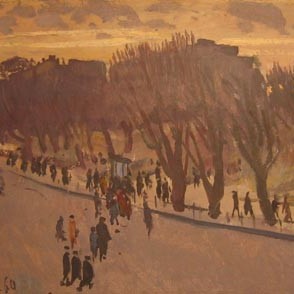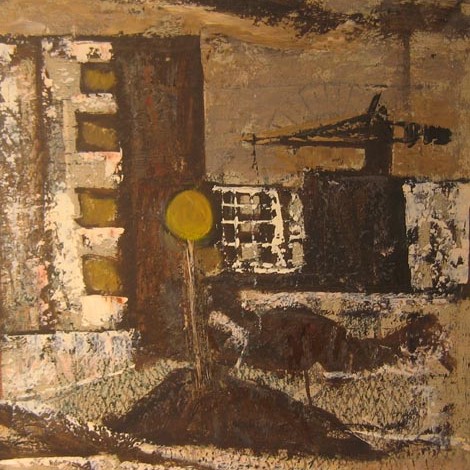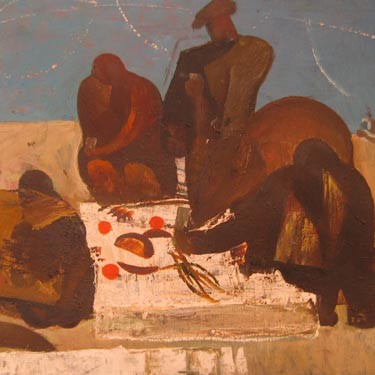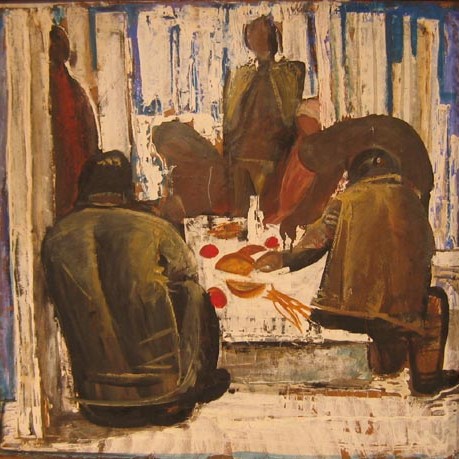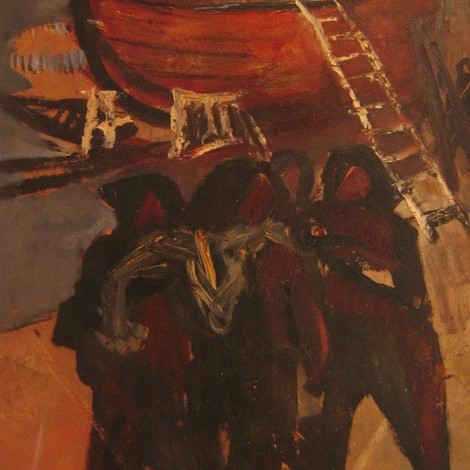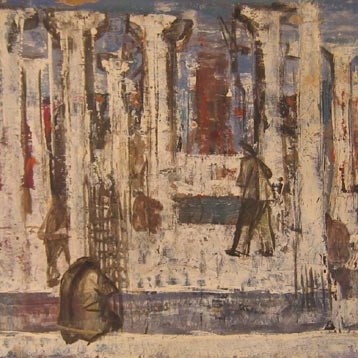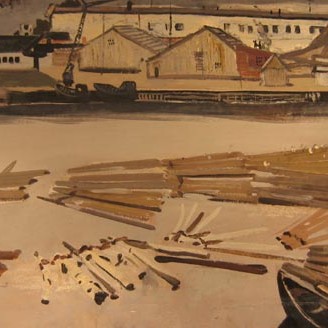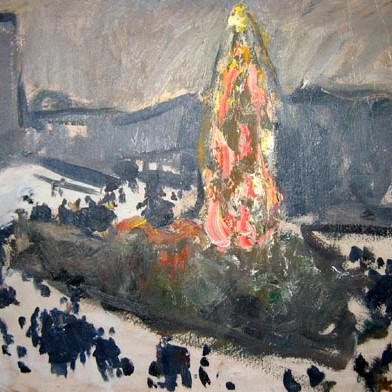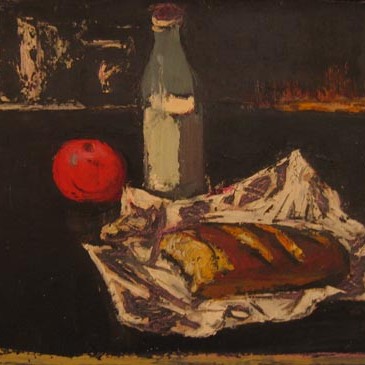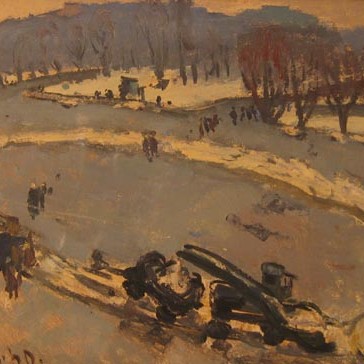Andrei Tarkovski, a well-known Russian film producer, pointed out in one of his lectures differences between painting and cinema and expressed the opinion that they have principally different aims: if a painting is trying to imitate something, then a film fixates the room in order to create an illusion of time. We may guess that during writing of these lines Tarkovski did not know works of Nikolai Kormašov.
The layers of meaning of the present exhibition could be cut apart in different manners. The first and not at all of minor importance is that of art historical one. Nikolai Kormašov is one of the best known painters of the local painting of the 1960ies, whose harsh style or manner of painting, where the artist does not concentrate on copying of the true-to-life and detailed reality, but renders with scanty means only that of primary importance, has found its firm position in documented art history. In the recently opened KUMU permanent exposition can be found several works by Kormašov of that period, which should first of all emphasize the fact, how in the Estonian painting took place moving from the cloning desire, subjected to firm rules, towards independent paintings.
The second passage at the exhibition could have the taste of the era. More exactly: it is difficult to interpret the works by Kormašov, if one does not take into consideration their time of painting. This concerns especially his cityscapes, where we see factories, new residential areas that are being constructed, we see workers having a rest. Yes, naturally building goes on always and everywhere, but during the Soviet time construction always rendered the notion of progress. Erecting of new buildings was supposed to make especially visible the progress of life in the state and no wonder that boys’ dream was to become a crane or an excavator operator. But Kormašov chooses the perspective and colours, which do not give the permission to talk of the beliefs of official rhetoric: before buildings are set up, there are huge piles of dirt, the sky is gloomy.
The third segment could be dedicated to Kormašov’s personal vision of the world. Yes, even though his works are depending on the depicted era, both of the social and art historical one, his works, both landscapes and cityscapes, reach a certain strange generalisation. Having lifted the painting camera on the shoulder, cameraman Kormašov does not only go to look for thrilling shots with gripping colour solutions, games with composition and form. He really acts in the style of Tarkovski: first of all he fixates the room, gives us a hunch of the scene of action and it always takes place in the world we recognise and which is sometimes even plainly commonplace. Thereafter he creates the illusion of time, but contrarily to the cinema: here time does not move forwards and backwards, but it is concentrated into one spot. And then comes the message. Hardly anybody is able to describe it exactly and most probably it is complicated to describe it anyway.
Maybe the only thing we may say is that we implement our profession for demonstrating our will to serve people.
That’s what Tarkovski said. And he could have said these words after having seen the works by Kormašov.
.png)
